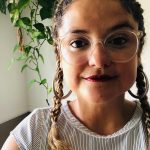San Ysidro High School is a high school located in San Ysidro, a region in South San Diego. It is part of the Sweetwater Union High School District along with twelve other high schools. San Ysidro High is highly diverse, with students coming from different ethnic and socioeconomic backgrounds. The school is located less than four miles north of the border with Tijuana. Our group worked with Marysol Gomez, an AVID and AP US History teacher at SYHS. AVID is a program that aims to prepare students for college and university. Marysol wanted us to work with the students to give students a taste of the higher learning experience. Our task was to come up with a college survival guide, which would contain several rules of advice for the students to consider, followed by an activity that utilizes each rule. Each week we met up as a group to come up with a rule of advice, and then we would come up with an activity that applied the rule. The following week, we would present the rule and activity during AVID. We would also share some of our own personal experiences in college to add on to some of our advice. Catherine (Xiyuan), Andrew, and Charlene presented to the 9th grade AVID class, while Minelia and Jeanine presented to the 10th grade AVID class.
Jeanine: Our work thus far working with San Ysidro High School was a challenge due to the remote environment we have been in this Spring quarter. Personally for me it was hard to feel engaged and like I was actually helping in some way the students because we didn’t get to meet them or interact with them either. My partner and I got assigned to do a morning session and so that was a factor that made it hard for us to feel like our labor was effective or not. The last challenge was that none other than me, my partner and the teacher had our cameras on while everyone did not so to reiterate, we could never find out what the reactions of the students were to our presentations. I had hoped that I would be able to document and archive an oral history of a student rather than an adult because I think this underserved population of kids should be reminded of their knowledge that they also have the power to develop as an assertive “historian.”
Catherine: The encounter with the high school students of San Ysidro High School was a very novel and interesting experience for me, because these small courses completed by ourselves require us to extract useful information from our own experience and thinking, and summarize it into boxed “recommendations.” The magical thing is that “UCSD” seems to be gradually taking shape in our description and summary. We introduced its clubs, its class model, the activities it provides, etc. This scattered information therefore builds a UCSD in the impression of students. I think this is also one of the things that the professors and speakers of HIUS120D want to tell us — everyone’s own unique experience can be a treasure. Our experience is the product of our growth and the subtle accumulation in our lives, and sharing it can make others have a more intuitive and in-depth understanding of the community we live in. While we are sharing our experiences, I guess the spirit of UCSD will also be passed on.
Charlene: Though there were some hiccups with working with San Ysidro High School over Zoom, I thought it was an overall fruitful experience. I personally enjoyed the fact that we were able to give our own advice to students, as it felt like giving advice to my past self. Some highlights that I remember were playing a game of Kahoot with the students, and also seeing students type their comments in the chat. It was definitely challenging to not be able to interact with students face-to-face, but I think this virtual format made public speaking a bit easier. It was also very challenging to come up with an activity that would be useful to students over Zoom, but I think we did well considering the circumstances.
Minelia: Our community partner was San Ysidro High, a highly diverse school located less than four miles north of the border with Tijuana. We worked with their Avid program which was facilitated by Mrs. Gomez. AVID is a program that prepares students for higher education success. This program uses mentorship strategies to provide support and resources to students. A challenge I encountered was trying to maintain a connection through a virtual setting because we could not see or personally meet students. Still, the highlight was that we were able to find creative ways to help students receive a college guide in which we hope that they will find at least of them useful now or in the future.
Andrew: Being given the opportunity to work with San Ysidro High was an incredible experience. Sharing the advice that helped me succeed at UCSD to students who were developing an aspiration to continue their education was the highlight of my time working with them. Although not being able to interact with the students through their screens and only through the chat was somewhat of a hurdle to overcome, it was a great experience overall. Virtual learning was something that the students I was working with had to go through for the first time in high school. The advice given was advice that I wished I had when I first came to UCSD and giving those students a heads-up on what to expect when they set foot on campus would be beneficial for them in the future.


